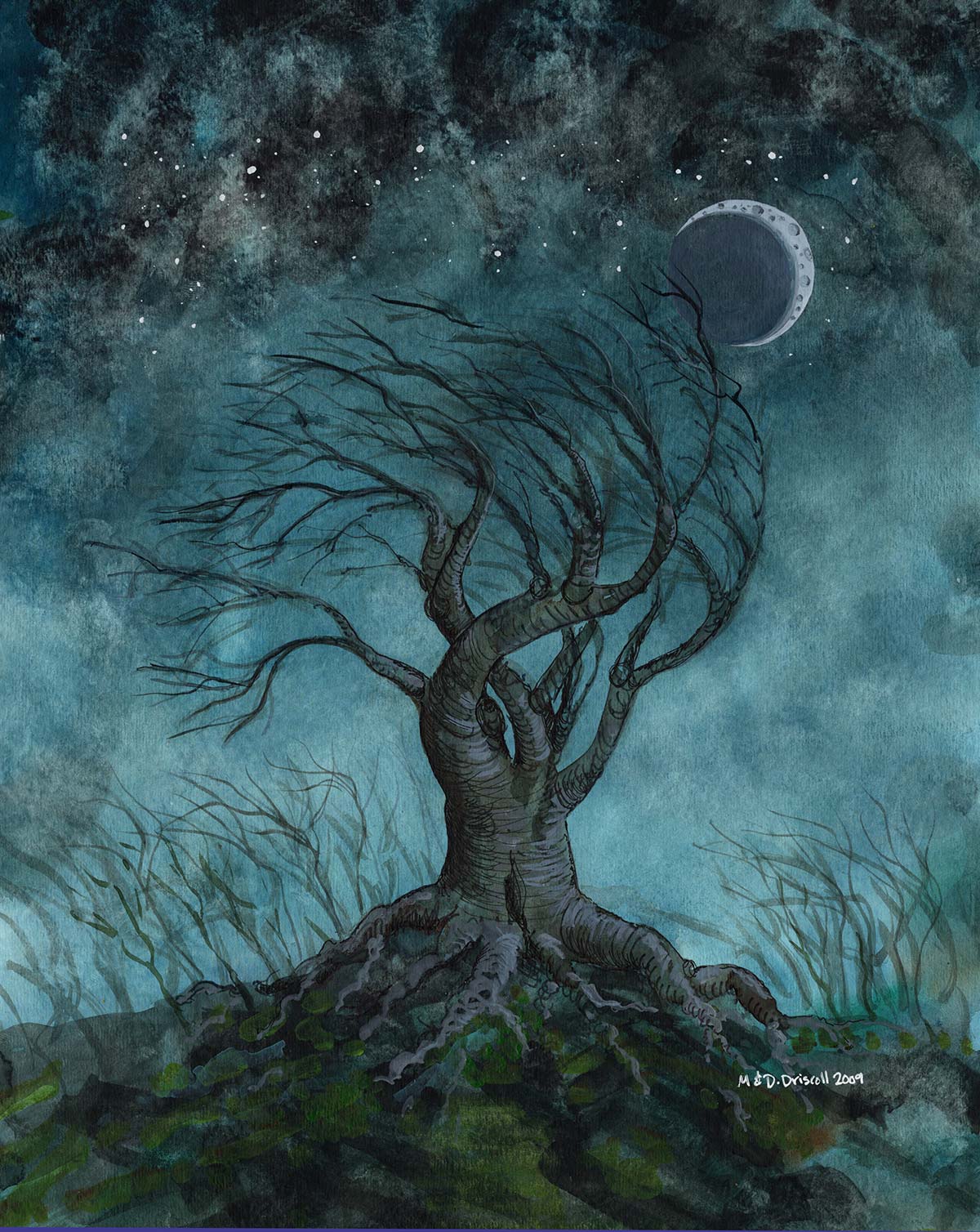 Creativity is the birthright of all people. When humans are young, play and creativity are central to our own development. Children don’t worry about it being ‘good’; they just make things, play with crayons, laugh, dance, and sing. They play. As children get older, school and society often discourage individual creativity and play, particularly in a culture that values economic growth above all else. The result of this has been a stifling sense of creativity, with many adults believing in the myth of talent (that you have to be good at something immediately to practice it creatively) or insisting they have no creativity.
Creativity is the birthright of all people. When humans are young, play and creativity are central to our own development. Children don’t worry about it being ‘good’; they just make things, play with crayons, laugh, dance, and sing. They play. As children get older, school and society often discourage individual creativity and play, particularly in a culture that values economic growth above all else. The result of this has been a stifling sense of creativity, with many adults believing in the myth of talent (that you have to be good at something immediately to practice it creatively) or insisting they have no creativity.
The bardic arts are those in the druid tradition that focuses on creative works: storytelling, creative writing, fine arts, fine crafts, and any other endeavor where you are building in your creativity. The ancient bards were part of the druid community and were the storytellers and historians of their people; undergoing rigorous training and learning how to pass on the legacies and traditions of their community. In the druid tradition today, we see any creative practice–for the good of the self, community, or unknown others–as part of the path of bardic arts. Druids see practicing the bardic arts and cultivating creativity as a spiritual act. Even with this positive framing, many people feel they “aren’t creative” and may be blocked.
Hence, culturally, we live in a world where a lot of people are discouraged from creating anything–and while this is starting to change due to the challenges of the last few years, I think we have a long way to go. Not being able to cultivate a sense of play and creativity has serious implications for our mental health and well-being. In this post, I’ll explore some of the reasons that creativity is good for all of us, drawing upon scientific research as well as druid sensibilities.
(I’ll also point readers to my longstanding series on the bardic arts, which can be found in these articles: taking up the path of the bard part 1, part 2, and part 3; cultivating awen in your life, bardic storytelling, bardic arts and the ancestors, and visioning the future. I’ll also point readers to my 2019 OBOD Mount Hameus lecture on the bardic arts in the druid tradition!)
Creativity, Bardic Arts, and Mental Health
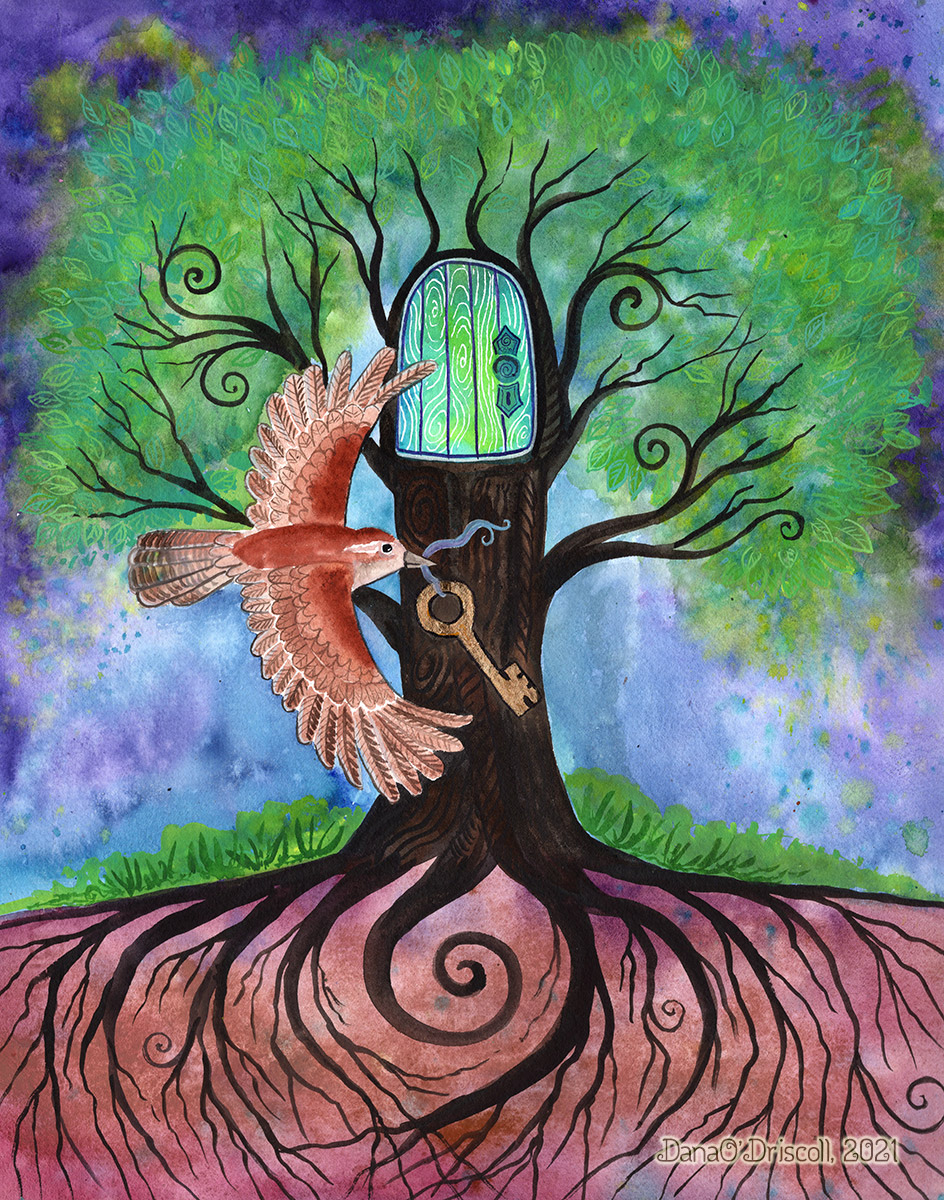 The idea that creative practices are tied to mental well-being has a fairly well-established history. In the 19th century, treating mental illness with the bardic arts was standard medical practice. This was before the age of pharmaceuticals and modern industrial treatments. According to this study from 2016, the idea of “therapeutic mental health landscapes” was common. People would be surrounded by gardens, beautiful trees, and landscapes, and be able to engage in a number of creative practices as therapy. This same kind of thinking: that creative practices have therapeutic effects can be found in research on World War I soldiers, in managing anxiety disorders, in helping individuals with compassion fatigue, and in managing depression. Studies from 2012 and 2008 demonstrated that women who engage in quilting and other crafts-based activities in their leisure time have more mental well-being and general happiness than those that do not. Similar findings are true for “men’s sheds” that provide socializing and opportunities to work wood. These are just some of the hundreds of studies that demonstrate the efficacy of creative practices on well-being and mental health.
The idea that creative practices are tied to mental well-being has a fairly well-established history. In the 19th century, treating mental illness with the bardic arts was standard medical practice. This was before the age of pharmaceuticals and modern industrial treatments. According to this study from 2016, the idea of “therapeutic mental health landscapes” was common. People would be surrounded by gardens, beautiful trees, and landscapes, and be able to engage in a number of creative practices as therapy. This same kind of thinking: that creative practices have therapeutic effects can be found in research on World War I soldiers, in managing anxiety disorders, in helping individuals with compassion fatigue, and in managing depression. Studies from 2012 and 2008 demonstrated that women who engage in quilting and other crafts-based activities in their leisure time have more mental well-being and general happiness than those that do not. Similar findings are true for “men’s sheds” that provide socializing and opportunities to work wood. These are just some of the hundreds of studies that demonstrate the efficacy of creative practices on well-being and mental health.
Scientific research has begun to explore the relationship between creativity and mental illness, both psychologically and genetically. This study from 2015 examined the relationship between schizophrenia and bipolar disorder and creativity. The study used a mathematical model to predict whether people who were diagnosed with mental illnesses had a higher disposition for creativity–and sure enough, they did. This led the researchers to suggest that creativity and certain mental illnesses may have the same genetic base. One study from 2003 explores divergent thinking (when people have to be creative within constraints) and makes the case that there there is a spectrum between creativity/genius and psychosis and madness/psychopathy. Thus, individuals may fall at different points on this spectrum. Most recently, genetic research suggests that one gene, the COM-T gene, may be linked to creative thinking. This same gene is also linked to certain forms of psychosis, such as schizophrenia. From this research, we see some link between creativity and mental illness.
In my own study of the creative arts within the druid tradition, I found that creativity helped address mental health challenges and create stability in a tumultuous world. As part of my 2018 Mount Haemus lecture, I surveyed 266 druids worldwide about their creative practices. Many, many participants felt that their bardic arts were necessary to their functioning as human beings. It wasn’t that bardic arts was simply a hobby to them, but rather, it was a critical and integral part of their own lives and helped with their well functioning. In my survey, of those who regularly practiced bardic arts, almost half responded in this way to the question “Why do you practice the bardic arts” with a discussion about mental illness and/or health and well-being. Some of their answers included: “My creative practices are akin to my breathing. I would be lost without them” and “I practice bardic arts to stay sane and grounded”; “Bardic arts help me navigate the difficulties of life.” Thus, 50% of my participants used creative practices not only for self-expression but for mental balance. Some people used the bardic arts to make sense of the world itself, while others used it to help process issues relating to their personal life or broadly to 21st-century life.
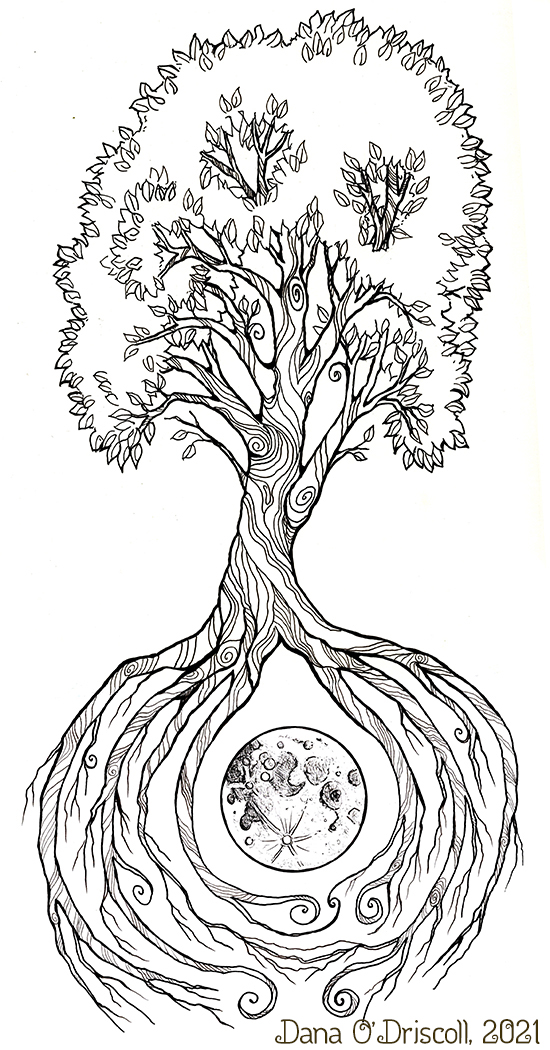 A personal example offers another interesting point to this discussion. On one side of my family, we have a lot of mental illnesses. And it has been a source of some discussion over the years, as some members of the family have debilitating mental diagnoses and others of us showed no signs of mental illness. At first, it seemed random; some of us lost the mental illness lottery and others were spared. It wasn’t until I started digging into this creativity research that I had the ah-ha moment. Those of us who had dedicated creative practices had little to no struggles with mental illness; those who did not have regular battles with mental illness. Did those with mental illness not create? Or did the lack of a creative practice allow mental illness to take root due to the lack of coping mechanisms? Or perhaps some of both?
A personal example offers another interesting point to this discussion. On one side of my family, we have a lot of mental illnesses. And it has been a source of some discussion over the years, as some members of the family have debilitating mental diagnoses and others of us showed no signs of mental illness. At first, it seemed random; some of us lost the mental illness lottery and others were spared. It wasn’t until I started digging into this creativity research that I had the ah-ha moment. Those of us who had dedicated creative practices had little to no struggles with mental illness; those who did not have regular battles with mental illness. Did those with mental illness not create? Or did the lack of a creative practice allow mental illness to take root due to the lack of coping mechanisms? Or perhaps some of both?
Another piece of this puzzle involves the state of mental illness in most industrialized nations. On the rise for mental illness of pressing concern are the youngest generations: children and college-age students have much higher instances of mental illness today when compared with decades ago. Changes to the school system and the rise of the testing culture have had the creative arts stripped from the curriculum. When funding grows tight, the arts are the first thing to go. We lock kids away in boxes, make them sit quietly and learn facts, test the hell out of them, never let them play or be outside, cut out music and art classes (with Common Core in the US, this is now even worse than before)–and we wonder why kids are depressed? Then, to have them cope with this reality, they get medicated. If children can’t play and create, of course, it is likely to cause a lot of psychological harm. What exactly does refusing them creative practices do? When these children grow into unhappy and disgruntled adults, is it surprising?
Adults have other issues. Most are conditioned to believe they are not creative and have no capacity for creativity that they literally engage in defeatest dialogue–“I could never do that” and “you’re so talented.” The myth of talent, that you have to be good at something the first time you try it, has caused serious harm to many who otherwise would create. The “I could never do that” shows a lack of understanding and willingness to experience creativity as a process–a process of learning, growth, exploration, struggle, and success. Being creative takes only a few simple things: a willingness to do it and persevere, some basic tools and instructions, and the time to invest. And yet, for many adults in modern western culture, the idea of creating is outlandish. I know this from firsthand experience--I’ve cultivated my own creative skills over a long time and now, that I’m a highly skilled artist, literally every time I share my work, I end up in one of these defeatest conversations.
So given all the above–how do we cultivate creativity? How can we gain the wonderful benefits of the Bardic Arts in our own lives?
Embracing Creativity and Flow for Mental Health

Finding ways of allowing ourselves to create–without judgment, without reservation, without blocks–can be an extremely freeing experience. By shifting our ideas of producing a high-quality creative work (which comes with time and practice) and instead simply making the act of creating the key goal, we can start to overcome some of these challenges and reap the rewards of creative practice in our lives.
A “flow” state is a creative state where a person gets deeply immersed in their work. In a flow state, you may lose track of time, have a deep focus on your creative activity, and often emerge from this activity feeling calm, refreshed, and grounded. A flow state is one way that druids would describe the ‘flow of Awen’ – it is when you are deeply immersed and simply flow with your creative practice. The flow state cultivates deep calm and relaxation and has health benefits similar to meditation.
All people are capable of getting into the flow state–and we can cultivate it by setting up the right conditions for it to occur. So here are a few things we can do:
- Create time for creativity and creative practice
- Work to develop a base level of technical skill in what you are doing–when you are too new at a skill, you will likely not get into flow states as easily
- SEtup any conditions that may aid you: the right tools, music, the right setting, etc.
- Rather than forcing a particular project that you want to create, try to allow yourself to work on whatever you feel drawn to in that moment. This particular thing has worked exceedingly well for me–it does mean I have a lot of projects ongoing, but I am always ready to make progress on one or two of them when I sit down to create.
For me, for example, I often get into it as a writer by playing instrumental music, sitting down at a set time each week, and doing some brainstorming to get me in the mood (most of my blog posts are written in the flow state, and revised at a later place). As an artist, my requirements are a bit different. I usually put on a familiar movie or music track (this time with words) and lock myself in my studio. And in either case, I ask myself, what am I most excited to work on? Of course, this kind of dedicated creative practice, along with my other spiritual practices, do help me maintain my mental balance and stability, even under conditions that can be difficult. You’ll note that with each of these, I’ve had to practice ways of getting and staying in flow states–and once I did, I had a method that “worked” for me, and therefore, allowed it to come often.
To be clear, I’m not saying that an emphasis on the creative arts is the solution to all mental illnesses. But what I am saying is that according to a lot of druids in my study, and based on some of the other factors shared above, it may offer us a buffer to stave off mental illness. Creative practices may be one of several things we can do to protect ourselves from the debilitating and rampant mental illness that is plaguing our culture. And we get some cool paintings, stories, or songs out of it too!
Thus, creativity can be a buffer not only for these challenging times where mental health and self-care seem to be at an all-time low, but also a buffer to help us understand, process, and experience the world. I certainly use my own artwork to do that: I paint my feelings and emotions surrounding fracking and mountaintop removal here in my home. I paint my feelings about the loss of my beehives due to colony collapse disorder. I paint my frustration about the inability of our world’s leaders (particularly here in the US at present) to do anything substantial about climate change and mass extinction.

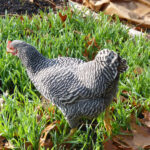

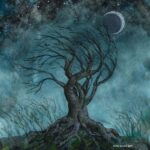
Reblogged this on Paths I Walk.
I woke up this morning feeling pretty low about things in general. I live with a very depressed roommate and sometimes her energy can get tangled with mine. After some journaling and daily Tarot practice, I was feeling a bit better, and then this post was in my email. It was spot on for me and a lot of the things I have been feeling lately. I really appreciate your ideas and insight and will be setting some creativity goals for myself in the coming days. Thank you!
Hi GratefulGran,
First of all, I love the name and how you’ve woven gratitude into it! Second, so glad these words can be helpful and healing to you. I would love to hear more about your creative goals :). Please share if you feel led!
[…] Creativity, Mental Health, and Well Being: A Case for the Bardic Arts — The Druid’s Garden […]
Dear Dana
As a Druid you’ll be aware of the original Six Solar Days of Divine Creativity that was topped by the Crowning Creation, which is us, as a collective body-of-God on earth, designed and ordained to share our Creator’s dominion.
If so, I’m sure you would agree that God had – has – a greater purpose than: — “*it may offer us a buffer to stave off mental illness. Creative practices may be one of several things we can do to protect ourselves from the debilitating and rampant mental illness that is plaguing our culture*.”
Seeing the human problem, from the divine perspective of a greater purpose – or from a Druid’s true perspective of logic-and-reason, which has the inherent potential to be the same as the divine perspective, since that is our purpose and the purpose of God’s Life we’re privileged to share – the “*rampant mental illness that is plaguing our culture*”, should be recognised as originating within the culture rather than from the Way-of-Life we are ordained to minister on earth as it is in heaven.
During your moments of shielding — from horrific externals you’ve allowed to trouble your emotional realm — by locking yourself in your studio to be creative, consider how much the greater purpose would be enhanced by your presence, and blessed by your creativity in cooperation with Mother Nature, instead of letting imagination find negativity to vent the feeling-frustration caused by the critical mind.
Some of the greatest advice ever given to mankind, to appease the human problem, was offered by the Perfect Druid, “*Let not your heart be troubled*”, because it is only through the untroubled heart that perfect love can address the human problem at a personal level, where matters such as GW and Climate Change are seen as threats by the victim-consciousness.
For example, consider Mother Nature’s purposeful Climate Re-balancing – our stormy climate is a long way out-of-balance since Eden – by seeing her work in restoring water, frozen at the Poles, to fulfil its role in the Earth’s ordained irrigation-process. That water is now needed more than ever before; a third of the world’s population are dying by being deprived of potable water. Besides what we pollute with our society’s well-intentioned pesticides, there’s the run-of from laundry-detergents and soap, beer-line cleaners, car-washing, and a host of other ways mankind’s cultures have unconsciously, or unwittingly due to cultural conditioning, polluted Earth’s environment with uncreative thoughts and feelings towards detrimental externals.
I trust this gives you a glimpse of the greater purpose, and, instead of identifying with thoughts-and-feelings of frustration caused by the human problem, see how our personal role will enhance God’s creative purpose, through mindful and heartfelt participation with the Way-of-Life.
On Sun, 28 Nov 2021 at 13:32, The Druid’s Garden wrote:
> Dana posted: “Creativity is the birthright of all people. When humans are > young, play and creativity are central to our own development. Children > don’t worry about it being ‘good’; they just make things, play with > crayons, laugh, dance, and sing. They play. As children” >
Hi Peter,
Thanks for your comment and for reading. I appreciate the time you’ve spent in crafting your comments, and I have a few thoughts in response.
First, what makes you think that creative works can’t be in line with divine purpose–and also provide mental health benefits? This is not an either-or situation. I can connect with nature–through painting nature, I can have health benefits, and I can do good work in the world, work in line with my own purpose tied directly to my spiritual work. This is part of why bardic arts are some of the most powerful tools we have.See this post for my thoughts on how important it is for artists to create positive visions of the future: https://druidgarden.wordpress.com/2021/01/10/visioning-the-future-through-magical-arts/
And regardless of how spiritual anyone is, I don’t think that we can disavow what is happening on the human level, or human-caused level. Trying to ignore it or pretend it isn’t happening by focusing on higher things is deeply contradictory to the basic tenants of druidry. Here’s why: despite the best efforts–physically and metaphysically–of myself and countless other humans globally, we are still facing the 6th mass extinction, facing extreme effects of climate change, and we are in for a very dark future–at least in the short term, in our lives and in the lives of our children and our children’s children. This is a fact. Nature is my church, it is my sacred space, and through it, I reach the divine. For a druid, there is no “ascension”–it is all here. So imagine the devastation you feel when your favorite forest burns in a millions-of-acres forest fire, another local species goes extinct, your river friend grows more and more polluted, or they frack the nearby mountain and you can hear that mountain’s screams of agony as its very bones are torn open. Regardless of our higher purpose, it’s ok to have feelings about these things, to process those feelings, and many of those feelings are a direct response to this nature-based spiritual path. Cause when you sign up for a nature-based spiritual path, you throw your lot in with nature. And that’s not an easy thing to do right now, and it takes its mental toll (I’m going to talk more about this in my December 18th post on the Winter Solstice). It’s ok to want to express and work with those feelings. And it’s healthy and sane to do so in this challenging world.
This post is THE BEST piece of writing I’ve read for an eon. Inspirational and healing. 🌺Brid
On Mon, 29 Nov 2021 at 12:32 am, The Druid’s Garden wrote:
> Dana posted: “Creativity is the birthright of all people. When humans are > young, play and creativity are central to our own development. Children > don’t worry about it being ‘good’; they just make things, play with > crayons, laugh, dance, and sing. They play. As children” >
Thank you so much, Bridget!
The noted speaker Brene Brown has a quote attributed to her: “Unused creativity is not benign. It metastasizes. It turns to grief, rage, judgment, sorrow, shame.”
Yes! That’s perfect and exactly in line with what I’m sharing here 🙂
[…] Creativity, Mental Health, and Well Being: A Case for the Bardic Arts — The Druid’s Garden […]
Such a wonderful article Dana. I missed a couple months here on your beautiful blog and am currently catching up 🙂 These last few weeks I found it very difficult to engage in my creativity. I couldn’t really sink into the deep. It feels like not beeing fully present in my body and might be a mild seasonal depressive episode. It doesn’t flow, instead it feels forced and restricted. Your article has some great suggestions in it and one of the reasons I keep coming back here is that you offer a practical approach. This brings me out of my head space and into tangible reality – but always with the spiritual side included. Greetings from over the pond, Claudia
Hi Claudia, thanks for sharing. These times are really tough. So many of us are carrying around so much trauma from the last few years of what has been happening in our world. One of the things I had happen right at the start of the pandemic and when I was facing a lot of uncontrollable awful things in my work situation was that I lost my creative drive. LIke for the first time, I couldn’t create. I was so sad about it. Finally, I realized I did have the capacity to create, but just not in the ways I was used to doing so. I found that I could do more repetitive things–like beading–but not things where I had to put too much thought or effort into something (e.g. designing a new drawing or painting, leatherwork, etc). So I shifted my creative practice to something a little more mindless and…oh, it felt so good to create. I wonder if that approach of shifting might be useful to you? I hope you are able to find your creativity again! Blessings :).
Thank you for your kind reply. You hit the nail on the head with bringing up the pandemic and the situation at large. It definately plays a huge part in this. My creativity is tied into my work a lot and I have to be honest, I’m looking forward to taking a break by the end of december. I want to hibernate and allow for some emptyness and silence so I may hear my own voice again. Meanwhile the idea of doing things without too much thinking is promising. Blessings to you as well.
Wonderful article on creativity and I totally agree to whatever you mentioned . Creativity is one of the best solution for mental illness. I am really intrigued with this bardic art form. I am gonna try it myself . Thanks for this creatively juicy post I enjoyed every bit of it. YOU ARE A AMAZING ARTIST.
Thank you! What kind of bardic art form are you thinking of trying?
What are the types? I feel I can more relate to the whimsical spiritual paintings which are easy to draw and have some patterns
I have a whole series of posts that can help you explore the bardic arts. I have them linked at the start of this post, and here are some ones that are most helpful:
https://druidgarden.wordpress.com/2017/06/18/taking-up-the-path-of-the-bard-part-i/
https://druidgarden.wordpress.com/2017/06/25/taking-up-the-path-of-the-bard-part-ii/
https://druidgarden.wordpress.com/2018/02/04/taking-up-the-path-of-the-bard-iii-practice-makes-perfect/
https://druidgarden.wordpress.com/2017/06/11/cultivating-the-flow-of-awen-in-our-lives/
I hope you’ll share what you decide to do :).
Thank you so much for sharing it 😊. I will surely go through it